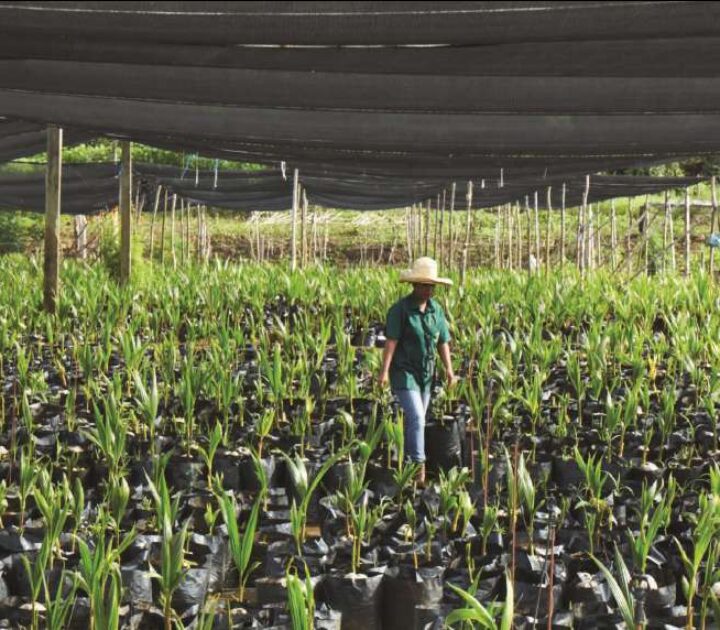
OPTING FOR EXCLUSIVITY
The story
An Argentine of Italian origin, Lando Simonetti built a career in the US fashion industry before returning to Argentina in 1985 and founding La Martina.
A keen polo player in his youth, Mr Simonetti saw an opportunity to provide professional players with high-quality equipment. He began by making leather saddles and boots, then added shirts and caps. To reinforce the brand’s Argentine roots, La Martina sourced 65 per cent of materials locally.
With a limited marketing budget, Mr Simonetti relied on word of mouth and a close link with the Polo Management Group, an affiliated company he set up to run big events around the world.
In Argentina and other Latin American countries, La Martina products were sold mainly in exclusive stores that had meeting rooms for polo players and team owners. In Europe, by contrast, distributors sold the products through multi-brand stores.
As polo wear became increasingly fashionable, sales boomed and exceeded $200m a year. La Martina became a highly desirable clothing brand, with prices well above those of rivals.
The challenge
La Martina’s expansion presented Mr Simonetti with a dilemma: to capitalise on polo’s new, cool status or fight it?
Fashion meant huge growth potential, while the polo-related market was small and concentrated in a few countries. There were only 20,000 professional players worldwide and 30,000 casual ones, mainly in Argentina, Brazil, Mexico, the UK and the US.
Moving further towards the fashion mainstream risked diluting the brand and exposing it to volatile consumer tastes. Mr Simonetti was worried that distribution in Europe was both too much overall and too broad – especially in Italy, where local licensees were pushing La Martina towards pure fashion.
The strategy
Mr Simonetti decided to restore the brand’s focus on polo and seek “quality volume” rather than faster, fashion-led growth.
His priority was to reinforce the exclusive image of La Martina in Europe. So he reduced the number of European distributors, ended the agreement with his Italian partners and set up a company in Switzerland to manage European operations.
Mr Simonetti refocused the European retail network by concentrating on flagship stores in prestigious locations such as Milan, Rome and Madrid, and in high-end summer resorts such as St Tropez, Capri and Sylt. He also ensured that La Martina had clearly signed corner sites or mini-shops in multi-brand stores such as Harrods.
Finally, Mr Simonetti re-emphasised La Martina’s four-level customer hierarchy, which prioritises products for professional polo players, then casual players, aficionados and fashion consumers. He also signed a new co-branding deal with Guards Polo Club in the UK, the club most closely associated with the British royal family.
The results
Sales are growing by more than 20 per cent a year in Europe and Latin America – a healthy but slower rate than it had been – and in Europe the brand has moved back to its exclusive niche.
La Martina plans to open 15 stores in 2013, in locations including Houston, Washington and Mexico, and is expanding cautiously into Asia.
The lessons
La Martina is one of a growing number of emerging-market companies to develop a successful global brand. It has done so via its passion for polo, its strong Argentine roots, exclusivity, distinctive stores and prestige, high-quality authentic products. About 20 per cent of materials continue to be locally sourced; those for the technical equipment – such as saddles, kneeguards and helmets – are 100 per cent from Argentina.
The case shows how rapid growth can potentially dilute a luxury brand, forcing its owner to make big strategic decisions. It also highlights the challenge of managing partners.
Mr Simonetti believes that brand content is La Martina’s only sustainable competitive advantage and must be managed constantly and aggressively – by resisting the temptation of fast fashion-led growth.
This article first appeared in the Financial Times on November 20th 2012.
Research Information & Knowledge Hub for additional information on IMD publications
![How AI gives Taobao's one billion customers the personal touch [Video]](https://www.imd.org/ibyimd/wp-content/uploads/2024/03/TheInterview-ChrisTung-IbyIMD-TopBanner-5_4-1250x1000-1-720x630.jpg)

in Harvard Business Review May-June 2024, vol. 102, issue 3


Research Information & Knowledge Hub for additional information on IMD publications
Research Information & Knowledge Hub for additional information on IMD publications
Research Information & Knowledge Hub for additional information on IMD publications
Research Information & Knowledge Hub for additional information on IMD publications
Research Information & Knowledge Hub for additional information on IMD publications
in Harvard Business Review May-June 2024, vol. 102, issue 3
Research Information & Knowledge Hub for additional information on IMD publications
Research Information & Knowledge Hub for additional information on IMD publications
Research Information & Knowledge Hub for additional information on IMD publications
Research Information & Knowledge Hub for additional information on IMD publications
Research Information & Knowledge Hub for additional information on IMD publications
Case reference: IMD-7-2282 ©2022